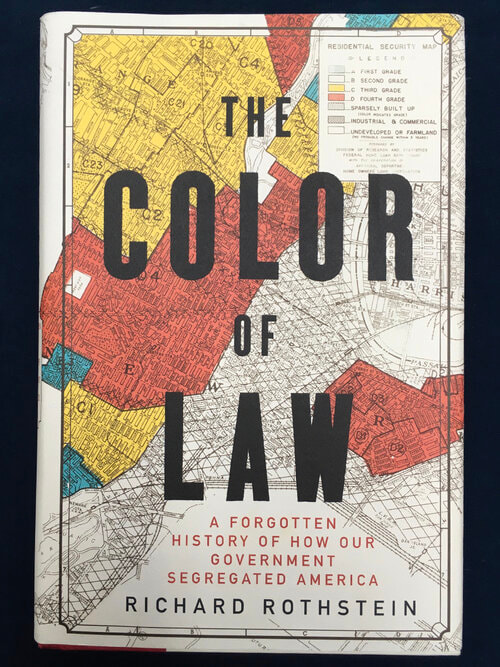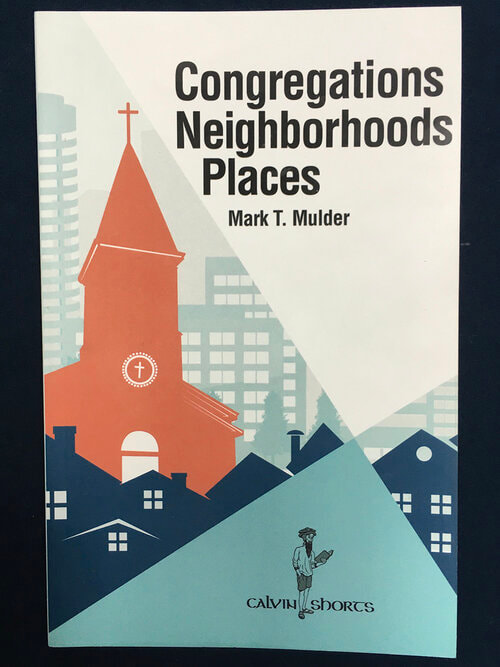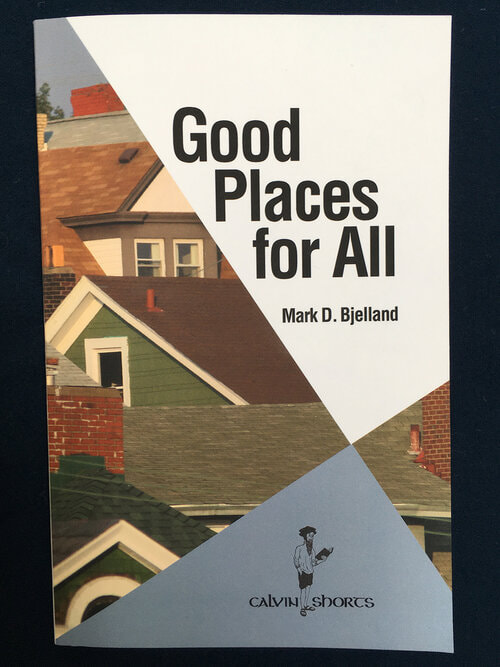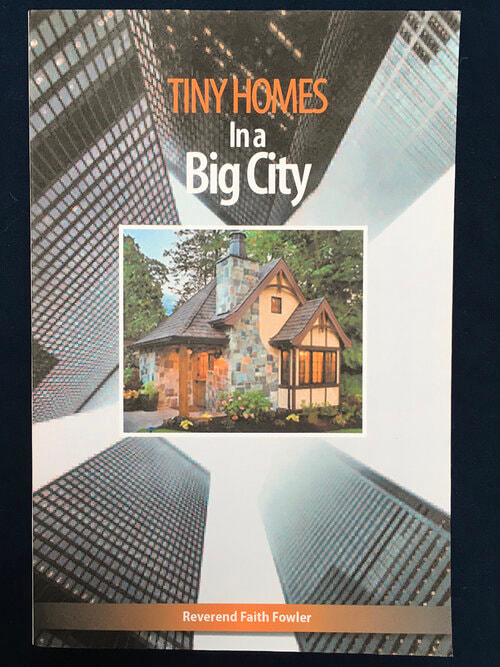The world of real estate development and affordable housing is filled with terms, concepts, distinctions, and acronyms that can be confusing to outsiders—PSH, SRO, LIHTC, ADU, Section 8 vouchers, land trusts, AMI . . . what are those?
See below for explanations of key concepts and distinctions that will help you and your congregation make informed decisions about the ways you might want to promote affordable housing in your community.
Affordable Housing |
Affordability
Anyone, rich or poor, can ask about the affordability of a house or apartment. A residence is affordable for some household if the annual mortgage or rent payments do not exceed 30% of that household’s annual gross (pre-tax) income. If a household’s gross annual income is $100,000, then no more than $30,000 ($2,500 a month) should be going for mortgage or rent payments. Affordable Housing While the calculation of housing affordability is based on a particular household’s income, however high or low, affordable housing is intended for low-income households. It is defined by reference to a percentage of area median income (AMI). AMI is determined each year for a region by the federal Department of Housing and Urban Development (HUD). It takes entire range of incomes in a metropolitan region and determines the median as the midpoint in that range—where half of the incomes are below and half above the midpoint. Area median incomes for households of different sizes (e.g., two-person households, four-person households) are determined by the application of a formula to the AMI. Affordable housing is then defined in terms of a percentage of the AMI. Typically, affordable housing—and affordable housing policy— is set at three household income levels: less than 80% of AMI is considered a low-income household; less than 50% of AMI, a very low-income household; less than 30%, an extremely low-income household. Take, for example, a household of four living in an area with a median income of $100,000 for a household of the same size. If that household is making $50,000—50% of AMI—then affordable housing set for that household will cost no more than $15,000 a year (30% of 50,000), which comes to $1,250 a month. Typically, households falling below the 50% level are eligible for housing vouchers, which pay the difference between 30% of their income and the stated rent of their apartment. (Note that far more households are eligible for housing vouchers than actually receive housing vouchers. The number of housing vouchers is finite and relatively fixed. One of the concerns about AMI is the scope of the “A,” the size of the area used to determine median income. Typically, the area is not municipal, but regional, incorporating wealthy suburbs as well as urban centers, where poverty is often concentrated. For that reason, the size of the area tends to drive the median income number up. In Washington DC, for instance, the AMI is $109,200 (according to 2016 numbers). A formula is applied to this number in order to determine the median for households of different sizes. The number for a household of four comes in at $108,600. But the regional area that serves as a basis for this calculation includes some of the wealthiest suburbs in the country in addition to over twenty towns and counties surrounding DC, driving the median income higher than it would be if it were assessed for DC alone. This may have the effect of making more households eligible for housing vouchers. But it also drives up the cost of what counts as affordable housing. As a result, inclusionary zoning, where developers are required to supply a certain number of affordable units in their developments (often set at 80% of AMI), will fail to serve many urban work-force households where the chief source of income comes from the service industry. In Washington DC, a household of four would have to make $75,150 to be able to afford affordable housing by this standard. Two people working full-time at $15 an hour would make a total of $62,400 a year, well below 80% AMI for that area. |
Gentrification |
The term gentrification was coined in the 1960s by British sociologist Ruth Glass to describe a phenomenon she observed in London: the “gentry” moving into working-class neighborhoods and upgrading their newly acquired accommodations, resulting in increased demand for residential properties, inflated real estate values, and the elimination of affordable housing. Eventually working-class households were priced out of their own neighborhood. The gentrifiers no doubt believed they were improving the neighborhood; the gentrified must have experienced this as an unwelcome invasion.
Since then, gentrification has been a controversial issue. It is also a complex issue that calls for a nuanced response. Economic change often brings in its wake unsettling social and cultural changes—changes often overlaid by issues of race and racism. Yet re-investment in a deeply distressed neighborhood generally improves the quality of the neighborhood and city services for all who live there, longtime residents as well as newcomers. Moreover, the rise in property values builds equity for all current homeowners. Re-investment can be a good thing. But involuntary displacement is a bad thing. The question is how to advance development without displacement; how to ensure development that preserves and enhances opportunities for all who live in a neighborhood, irrespective of household income. A number of the strategies discussed in this section of the website are designed to promote the development of affordable housing—especially important for low-income renters, the population most vulnerable to involuntary displacement. One of the lessons learned by non-profits in the area of housing is that neighborhood development has to occur on a number of fronts in order to avoid the negative effects of gentrification. Focusing on the improvement of physical structures alone is not enough. Both rehabilitation of existing housing stock and the construction of new housing must be complemented by concerted efforts to (1) build social cohesion within the neighborhood so that it is better able to identify and represent its own interests; (2) foster equitable economic and educational opportunities including good jobs and schools; (3) secure access to reliable public transportation and affordable health care. Much public debate and media attention have been devoted to the problem of gentrification. When gentrification happens, it is often dramatic and controversial. But there is evidence that gentrification is not the chief problem facing the majority of low-income households in the United States. The number of neighborhoods that have experienced gentrification is dwarfed by growth in the number of chronically poor neighborhoods. A recent study of neighborhoods in 51 metropolitan areas of the United States found that the number of high-poverty neighborhoods (where over 30% of households live below the poverty line) nearly tripled between 1970 and 2010: from 1,100 to 3,100. Only 100 of those same 1,100 neighborhoods saw a significant increase in middle to high-income households in the same period of time. Clearly the larger problem is the explosive growth of chronic high-poverty neighborhoods. Response to that problem should focus on the equitable distribution of opportunities across all neighborhoods—in jobs, education, housing, transportation, parks, recreation, and health care. Equity in opportunity across the board is needed to narrow the yawning gap between the rich and the poor that is the seedbed of gentrification, where impoverished neighborhoods become investment opportunities for those with outsized capital resources and people who are economically disadvantaged are forced out. The problem of inequity is the problem behind the problem of gentrification. Creating affordable housing is an important piece in solving the problem of inequity. But it is only one piece. |
Lean Urbanism |
Between 2009 and 2017, median home prices in California went up 72%, while median income went up only 6.5% in the same period of time. That is a formula for a housing affordability crisis, and for rampant homelessness. In 2019, the state of California counted 151,278 people living in streets, parks, and cars.
In some circles, the go-to explanation for rising house prices is gentrification. But not all increases in housing costs are due to high-income households moving into low-income neighborhoods. Sometimes the housing bubble is caused by a simple lack of supply—not enough housing units to accommodate demand in an entire metropolitan area. Lean urbanism is a movement dedicated to increasing the supply of affordable housing stock by reducing or eliminating unnecessarily burdensome regulations that not only add costs to building houses but sometimes discourage development altogether. It is also on the lookout for ways in which the permitting process for housing construction can be streamlined and made less expensive. According the diagnosis offered by lean urbanists, the current state of building regulation and permitting has made development the business of large-scale companies with huge capital resources, a long history of experience, and a small army of attorneys well-versed in the legal intricacies of the development world. Local, small-scale operators, focused on incremental development within existing neighborhoods, are put at a distinct disadvantage. In most municipalities, for instance, special permission is required for the conversion of a single-family dwelling into a duplex, for the addition of accessory dwelling units on existing residential property, or for the construction of a couple townhouses in a neighborhood zoned exclusively for single family dwellings—precisely the kind of bottom-up infill development that could alleviate much of the housing shortage today. Lean Urbanism recommends a multi-pronged approach to the promotion of local, small-scale, incremental development. It includes simplifying the permitting process (creating “pink zones” with less red tape); reducing or waiving development fees for small projects that will have relatively little impact on the local infrastructure (establishing “thresholds”); and relaxing zoning restrictions on the kinds of residential units that can be built in the same neighborhood, so that single family detached housing can exist in the same neighborhood as duplexes, triplexes, townhouses, and accessory dwelling units. The latter could then be built “by right” rather than special permission, provided they follow basic guidelines and requirements. |
Accessory Dwelling Units |
Planners and developers like to sling around acronyms as if we all knew what they stand for. “PSH”? That’s Permanent Supportive Housing, where vulnerable populations can live long-term and receive needed social services. “SRO”? That‘s Single Room Occupancy, essentially bedroom rental units without their own kitchen and bath facilities.
“ADU” is now a commonly used acronym in debates about affordable housing. It stands for Accessory Dwelling Unit—also known as a “granny flat,” “mother-in-law apartment,” or in some cases “carriage house.” An ADU is a secondary dwelling unit on a residential property, either in the back yard or in the house. Sometimes you can see ADUs over the garages of older homes built before modern zoning laws made them illegal. With the current crisis in affordable housing, many have wondered whether zoning ADUs out of existence was a good idea. The rise in rent and house prices can be a result of gentrification, when higher income households move into a lower income neighborhood. But it can also be the result of a simple lack of housing supply overall. When demand outstrips supply, prices go up. That’s a general rule of market economies. Oddly, there is not so much a shortage of livable space in most cities in North America as there is a shortage of housing units. Over the last four decades, houses have gotten bigger as households have gotten smaller. Many homes have unused bedrooms or even unused entire floors; many have undeveloped land in the form of large backyards. ADUs create housing units out of excess livable space. ADUs come in three basic forms: the renovation of the interior space of a house—the conversion of a basement, second floor, or attic into a separate dwelling unit; the addition of a dwelling unit onto an existing house; or the construction of a free-standing dwelling unit in a backyard. In short: interior, attached, and detached. ADUs can make housing more affordable for both homeowners and renters. They provide a rental income stream for homeowners that can go towards their own mortgage payments, making their house more affordable. Some empty nesters have even moved into their own ADUs and rented out their main residence. Renters often benefit too. ADUs are typically cheaper to rent than comparable apartment units. In Portland, Oregon, the average monthly rent for a one-bedroom apartment is $1,370; the average rent for a one-bedroom ADU, $1,095. In Washington, DC: $2,000 a month for a one-bedroom apartment; $1,350 for a one-bedroom ADU (2017 numbers.) Studies in the Bay Area of San Francisco have shown that rents for ADUs are 10% lower than rents for comparable apartment units in multi-unit buildings. That may be in part because interior ADUs—the most common kind—are much cheaper to build than apartment units. Moreover, the addition of any ADU increases the overall supply of housing, which helps keep rents down. If just 3% of existing houses in a neighborhood of 2,000 houses were to add ADUs, 60 housing units would be added overall—not through the construction of large apartment buildings, but through the dispersed, incremental, and largely invisible addition of housing units to existing homes. For more information on ADUs, go to accessorydwellings.org and buildinganadu.com. |
Community Land Trusts |
Let’s say a church or non-profit organization rehabs a house in a gentrifying neighborhood and sells it below market rate to a low-income household. Five years later that household sells it at market rate for a handsome profit. From that point on, the house is no longer a part of the local affordable housing stock.
How can a house be made affordable and then kept affordable in perpetuity? Affordable not only for the first owners, but for all who come after them? One answer to that question has been proposed by the idea of a Community Land Trust. Here the ownership of the land and the ownership of the house on the land are split apart. The Community Land Trust, typically a local non-profit organization, owns the land and leases it to the private party who owns the house. Built into the lease agreement is a formula that limits the re-sale value of the house and the owner’s share in its appreciation. Re-sale of a land trust house is usually limited to low-income first-time homebuyers. That way the house can be bought below market, and sold below market, while the owner builds up a certain amount of equity and the house remains part of the affordable housing stock. In effect, the Community Land Trust keeps housing affordable by ending land speculation. Community Land Trusts, as we know them today, have their roots in the work of Robert Swann and the Civil Rights movement of the 1960s. After working with the president of Antioch College in Yellow Springs, Ohio, on community land development, and then with Frank Lloyd Wright on a Usonian House development on cooperatively owned land outside Kalamazoo, Michigan, Swann put together a community trust to buy and lease farmland in Georgia to African-American sharecroppers who had been repeatedly pushed off their farms by white landowners. Since then, the idea has gone urban, focused on housing. There are now over 250 Community Land Trusts (CLTs) in America. The largest CLT is in Burlington, Vermont. It manages over 500 houses and 1,500 apartments. As a tool for the creation long-lasting affordable housing and the protection of low-income households from the effects of gentrification, CLTs are still in a work in progress. Banks are often hesitant to make loans for houses that do not include ownership of the land beneath them; some buyers would prefer to benefit from the full market appreciation of the house they own. Ongoing revenue for the land trust is often a challenge: it makes no money on a house after the initial sale, and the land lease rarely covers the costs of operating the trust. If apartments are part of the land trust, rental income is, of course, helpful. Outside sources of revenue are often necessary. Nevertheless, the CLT idea is worthy of inclusion in the affordable housing toolkit. The average tenure of a household in CLT housing is seven years. 60-70% go on to purchase market rate homes. The association of CLTs is currently represented by the Grounded Networks Solutions, which is an excellent resource for more information on Community Land Trusts. Some cities in the United States are now coordinating the work of land banks (where municipalities or counties acquire vacant or tax-delinquent properties) and land trusts (that then buy, rehab, and keep those properties affordable). See this article from the Lincoln Land Institute. |
Co-op Housing |
Imagine an apartment building not owned by an absentee landlord, or a distant group of investors, but by the people who live there. Unlike like a condo building, where residents own their individual units outright, members of a housing co-op own shares in the co-operative. Ownership of a share entitles the shareholder to one unit of housing. Since the cooperative is a non-profit corporation that owns the building, co-ops are typically more affordable than apartments or condos. They operate at cost. In addition, housing co-ops are managed by the residents themselves, either as a whole or by way of a board of directors elected by the residents. Rules for the co-ops are established by the members and vary from one co-op to the other. But most co-ops do not allow subletting because their aim is to create a community of shareholders, not investment opportunities. Prospective members of a co-op are typically screened and selected by the existing members.
Market Rate Co-ops allow shares to be bought and sold on the open market. Limited Equity Co-ops set limits on the prices at which shares can be bought and sold, usually in the interest of maintaining affordable housing. Members of the co-op typically buy a share by way of a “share loan” instead of a mortgage. For that reason, closing costs are lower. In addition to paying back the loan, members will also pay a maintenance fee to cover the ongoing costs of upkeep, repair, and improvements for the building. A recent Australian study found that co-op housing is on average 14% less expensive than comparable market-rate housing. Housing co-operatives go back some 200 years. The generally agreed upon principles of co-operative housing were formulated in 1844 by the Rochdale Society of Equitable Pioneers in Rochdale, England. They are: voluntary and open membership; democratic member control; member economic participation; autonomy and independence; education, training, and information; cooperation among cooperatives; concern for community. For more information on co-op housing, see the National Association of Housing Cooperatives. |




